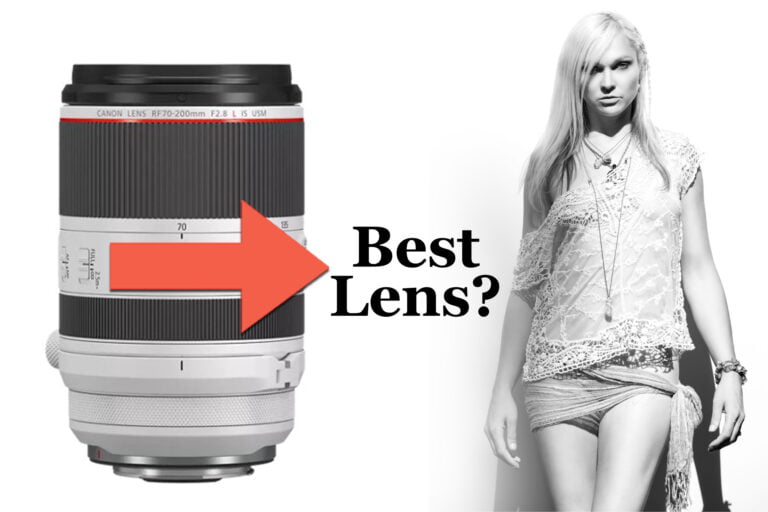Using the Canon R5 with EF lenses allows photographers to leverage their existing collection of EF glass on the new mirrorless body, offering a seamless blend of the familiar with the new. In this article, I’ll share insights and personal experiences on how the R5 pairs with various EF lenses. From capturing sweeping landscapes to detailed portraits, you’ll get a real sense of how these lenses perform in different scenarios when adapted to the R5. Ideal for photographers curious about adapting their trusted lenses to a mirrorless format, this guide aims to illuminate the practical aspects and advantages of this combination.
This post may contain affiliate links, meaning I get a commission if you decide to make a purchase through my links at no cost to you. Please read my disclosure for more info.
Can Canon R5 Use EF Lenses?
Wondering if you can pair your Canon R5 with EF lenses? Absolutely, you can! The Canon R5 primarily uses the RF mount, tailored for its mirrorless system. However, for those of us transitioning from older Canon DSLRs with a collection of EF lenses, there’s a straightforward solution. Just grab an EF-EOS R adapter, and you’re good to go. This adapter acts as a bridge, letting you use any EF lens with the R5 seamlessly

Interestingly, my experience with the Canon R5 using EF lenses has been pretty impressive. I use the Canon EF-EOS R adapter myself, and the results are noteworthy. Compared to when I used these lenses on my old Canon 5D Mark III, the autofocus is quicker and more accurate. It’s a game-changer, really. It feels like giving a new lease of life to my trusted EF lenses. The R5’s advanced technology, combined with the adapter, enhances the performance of these lenses significantly.
In summary, if you’re considering the Canon R5 with EF lenses, go for it. The combination works flawlessly, giving your EF lenses a performance boost. This flexibility is a huge advantage for photographers like us, who’ve invested in EF lenses over the years. The Canon adapter is robust and easy to install, ensuring that your transition to the mirrorless world is smooth and your beloved lenses stay relevant.
EF vs RF Canon Lenses
When diving into the EF vs RF Canon Lenses debate, it’s crucial to understand the differences. RF lenses boast a 12-pin connection, unlike the 8-pin setup in EF lenses. This extra connectivity means RF lenses can transmit more data to the camera body at higher speeds. As a photographer, I appreciate how this translates to faster focusing, more accurate autofocus, and enhanced image stabilization. You really notice the the difference right away.

Moreover, RF lenses come with an innovative control ring. This feature allows you to program the ring for common adjustments like ISO, shutter speed, or exposure compensation. While EF lenses lack this ring, select EF-EOS R adapters include it, which is a neat workaround. Flagship RF models, such as the RF 24-70mm and RF 70-200mm, are not only compact but also outperform their EF counterparts in image quality and autofocus speed.
However, it’s not all about newer technology. EF L series lenses continue to impress with exceptional image quality. Following the release of RF lenses, they’ve become more affordable. So, which is better? If top-notch image quality and the fastest autofocus are your priorities, RF lenses are unbeatable. But for a balance of cost and features, EF lenses still deliver fantastic results at a more attractive price point. The choice between EF and RF lenses ultimately hinges on your specific needs and budget.
How is the Canon R5 IBIS with EF Lenses?
Before I purchased my Canon R5, I had reservations about how well the in-body image stabilization (IBIS) would work with my old EF lenses. After using this camera body for a couple of years now, I can confidently say that the R5’s IBIS system works flawlessly with EF lenses. It’s always active and provides a significant boost in stabilizing images. This compatibility is particularly beneficial for those who have invested in EF lens collections over the years.

The Canon R5 boasts a remarkable 8 stops of in-body image stabilization. When combined with the optical image stabilization in EF lenses, the result is a powerful dual stabilization system. This synergy enables me to capture sharp still images even at slower shutter speeds, broadening creative possibilities in low light conditions. Canon R5 stabilization with stabilized EF lenses is truly a wonderful pairing when shooting hand held.
Furthermore, the IBIS proves its mettle in video recording. Shooting handheld videos without a gimbal is remarkably efficient, as the IBIS compensates for camera shake, ensuring smooth footage. The Canon R5 with EF lenses is indeed a powerful combination, offering the flexibility and stability needed for remarkably smooth hand held captures.
Canon R5 Adapters for EF Lenses
For photographers eager to use their beloved EF lenses with the modern Canon R5, there’s good news. All EF lenses are fully compatible with the R5, provided you use an EF-EOS R adapter. This adapter will allow you to use your collection of EF lenses with the cutting-edge technology of the R5. In my experience the integration is smooth, ensuring that the lenses perform with the R5 as if they were native to the camera.
There are lots of 3rd party adapters available, but I chose to go with the Canon EF-EOS R adapter because of it’s track record of reliability and build quality. This combination improves autofocus performance (when compared to EF lenses on DSLR bodies) without any degradation of image quality.

For a deep dive into various Canon EF-EOS R adapters and the myriad third-party options, this detailed review is a must-read. It offers invaluable insights to steer you towards the perfect adapter for your needs.
Check Price: Canon EF-EOS R Adapters
- Adorama: EF to RF Adapter | Adapter with control ring | Adapter with ND filter
- B&H: EF to RF Adapter | Adapter with control ring | Adapter with ND filter
- Walmart: EF to RF Adapter | Adapter with control ring | Adapter with ND filter
Check Price: 3rd Party EF-EOS R Adapters
EF Lenses on Canon R5
The Canon R5 has quickly become a favorite among photographers for its versatility and advanced features. But what elevates its capabilities even further is the seamless integration with Canon’s EF lens lineup. The use of EF lenses on the R5 not only expands creative possibilities but also leverages the camera’s full potential. From ultra-wide landscapes to intimate portraits, the combination of the R5 with various EF lenses demonstrates remarkable flexibility and quality. Below, I share my firsthand experiences with different EF lenses on the R5, highlighting how each one complements and enhances the camera’s performance across various photography genres.

Canon R5 with EF 16-24mm f/2.8

Using the Canon R5 with the EF 16-24mm f/2.8 lens has been a game-changer for my landscape and wide-angle environmental portraits. This lens’ ability to capture expansive, sharp scenes maximizes the R5’s advanced imaging capabilities. It’s an ideal combination for photographers looking to broaden their perspective.
Canon R5 with EF 24-70mm f/2.8


The EF 24-70mm f/2.8, when paired with the Canon R5, excels in fast-paced environments like photojournalis or children’s portraits especially in low-light conditions. The autofocus is swift and pinpoint accurate, capturing each moment with stunning clarity. As a versatile portrait lens, it’s perfect for a range of compositions, from full-body to ½ – ¾ length portraits.
Canon R5 with EF 70-200mm f/2.8

Pairing the Canon R5 with the EF 70-200mm f/2.8 offers exceptional performance, particularly in challenging light. Its autofocus is both rapid and precise, ideal for capturing distant subjects at events and in photojournalism. The lens’s compatibility with the R5’s image stabilization allows for sharp, up-close, and personal portraits, even from afar.
Canon R5 with EF 85mm f/1.4

The EF 85mm f/1.4 lens, combined with the Canon R5, is perfect for shooting natural light photojournalism in low-light scenarios. The autofocus is remarkably fast and accurate, ensuring each portrait captures the subject’s essence. Moreover, its ability to produce a shallow depth of field, along with the R5’s IBIS, creates stunning, professional-quality portraits.
How Well Does the Canon R5 Work With EF Lenses
In summary, the Canon R5 paired with EF lenses offers an impressive, versatile setup for both new and experienced photographers. This combination allows for the use of a broad array of EF lenses on a technologically advanced mirrorless body, enhancing literally enhancing the old lenses performance. Notably, the R5’s IBIS system functions flawlessly with EF lenses, ensuring sharp images and stable, smooth video.
Additionally, the practical use of EF-EOS R adapters makes this transition effortless, keeping your older lenses relevant and fully functional. While RF lenses provide faster autofocus and additional features like a control ring, EF lenses remain a cost-effective, high-quality option, especially given their enhanced performance on the R5. Ultimately, whether for professional photojournalism, stunning portraits, or capturing expansive landscapes, the Canon R5 adapted with EF lenses is a formidable combination for both armatures and professionals.





